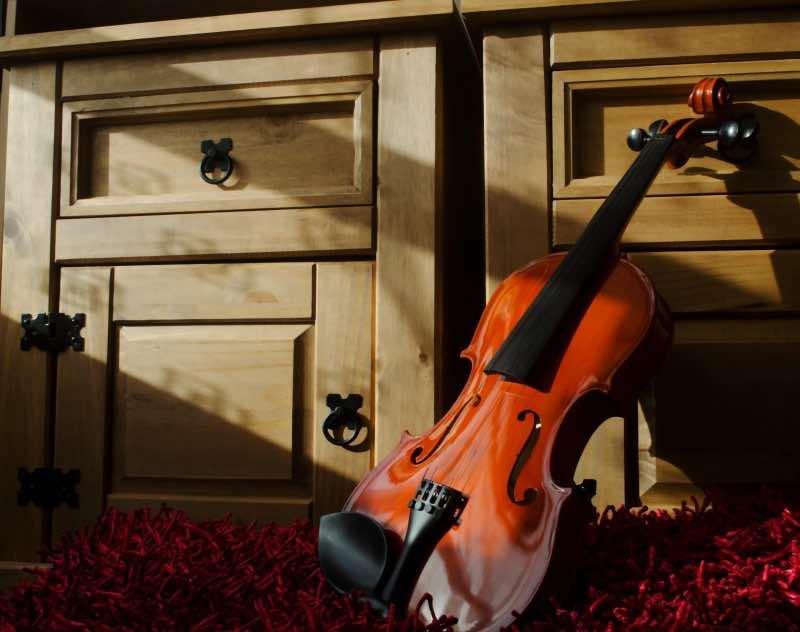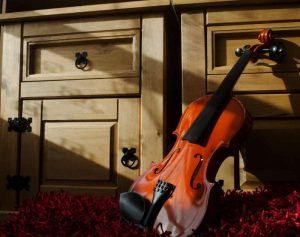What is Violin Restoration?
Violins are can be finely crafted instruments made by master luthiers with decades of experience or machine-made student models put together on an assembly line. These are the two extremes that one can encounter when owning or renting a violin. There are, of course, many variations of these extremes that will affect the cost and value of these instruments. One thing that all of these different levels of violins have in common is that they come from the workshop or factory in brand new condition. Or in the case of many older violins, very well preserved and in excellent condition.
What can go wrong with your beloved instrument?
Just like anything else that is assembled, put under high pressure, and used frequently, your violin will need to be serviced from time to time. This servicing will be roughly divided into two categories: Maintenance (low level restoration) and Restoration.
1. Maintenance (small items)
This covers items that will naturally wear out over time.
Strings
Strings need to be changed. (Check my How to String a Violin Guide)
You should plan on changing your full set of strings every year. This ensure that they are responsive to your bow technique. It will make the instrument easier to play.
Bows
Getting your bow re-haired is probably the next biggest maintenance item. Also, getting the wrap redone at the frog is a good idea to help maintain the proper bow grip. All the dirt on the hair at the frog can also be washed off with mild dishwashing soap. If you do this on your own, make sure only the hair gets wet and rinse it thoroughly, so no soapy residue is left.
Cleaning and polishing
Getting a good cleaning to remove all the fingerprints, dust (inside and out) and rosin from your instrument keeps your instrument fresh and looking great. If you decide to do this yourself, use a proper violin polish and not commercial products like furniture polish. Pro tip: if you are trying to clean out the dust inside the violin, use a handful of rice grains poured through the F holes. Shake them around to collect the dust, and you can empty them out!
2. Medium violin restoration types
Fingerboard
One of the most common problems is getting a buzzing sound while playing. This can be caused by the fine tuners being loose, a bad string that is unraveling, or in more extreme cases, the fingerboard getting uneven. The fingerboard is just like a road that gets uneven after a lot of use. The unevenness can cause buzzing and problems with shifting and intonation. A luthier will ‘plane’ the fingerboard to make it perfectly smooth.
Bridge
The bridge must perfectly match the contours of your fingerboard to work properly. Over time the strings will cut down into the bridge and the bridge will need to be reshaped. This is also true if the fingerboard has been planed extensively. If the sound and tonality are not even a luthier will also modify the thickness of the bridge to bring out the best tone of the violin.
Pegs
Classic friction pegs will become loose or more rarely stuck in the peg holes. This can sometimes be fixed by the player with some peg dope. In more extreme cases a luthier will either ream the peg holes or suggest a new set of pegs be used.
3. The big ones (major violin restoration needs)
Well, I saved the worst for last. These are catastrophic failures in the structure of the violin that renders it completely unplayable. These items will open over the natural course of an instrument’s life. Generally, the better instruments will have less issues. The same is true for instruments that are well treated on a daily basis. This includes keeping your instrument in a closed case in a temperature and humidity controlled environment. No special equipment necessary. Keep the temperature and humidity constant. Never ever, ever leave your wooden instrument in a parked car. This will dry and warp all the parts and cause breakage or seam cracking.
Cracked body or neck
A trained luthier will be needed to take apart the instrument and re-glue it. If something like the neck has broken completely, then it will usually be replaced for cheaper instruments. Cracks in the body should be fixed immediately. Don’t let breaks and seam cracks get worse.
Sometimes the scroll will break off. Avoid hanging your violin by the scroll. It is not meant to be load bearing.
Cracked bridges.
Bridges are under tremendous stress and will occasionally fail. In this case, a new bridge needs to be carved by your luthier.
Sound post
This is a small dowel that connects the top and bottom of the violin body. It is held in place near one of the bridge feet inside the violin. Proper placement is critical for a good sound. If the post breaks, then a new one must be made and shaped to size.
This brings us to the end of our discussion of Violin Restoration. I hope it has been enlightening and helpful. If you are interested in lessons and learning more about your violin send me a message here on Takelessons.com and happy playing.
Mark Williams

